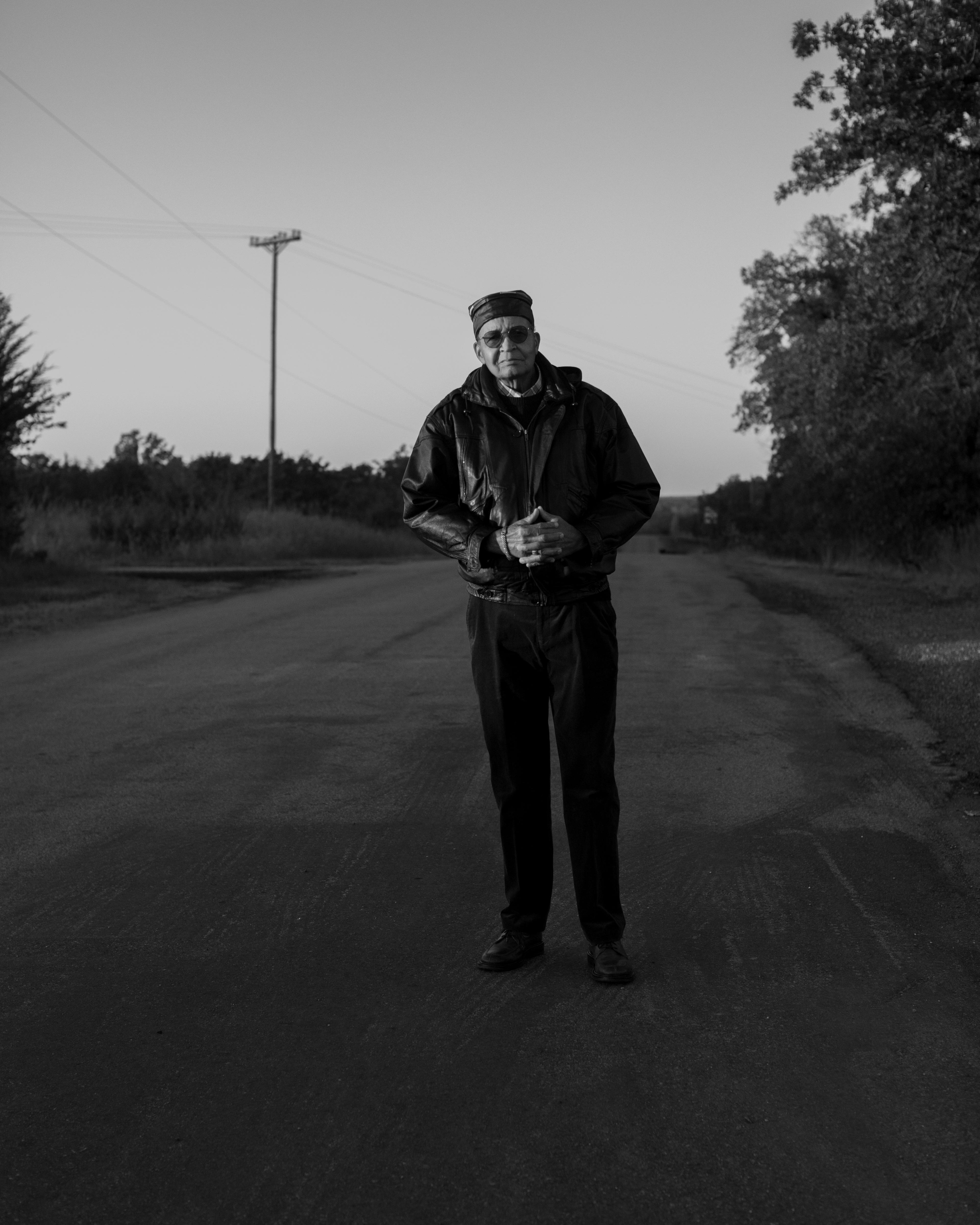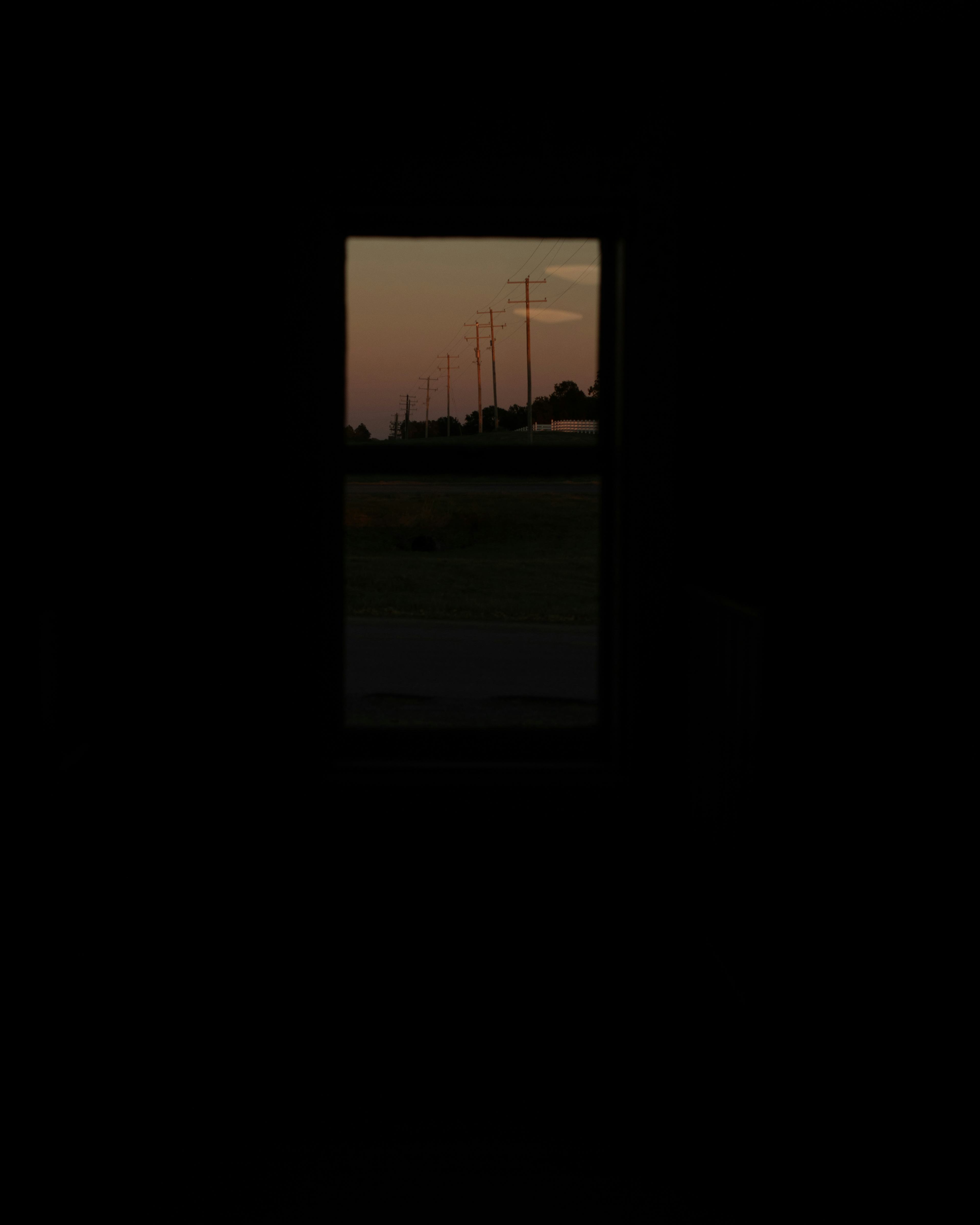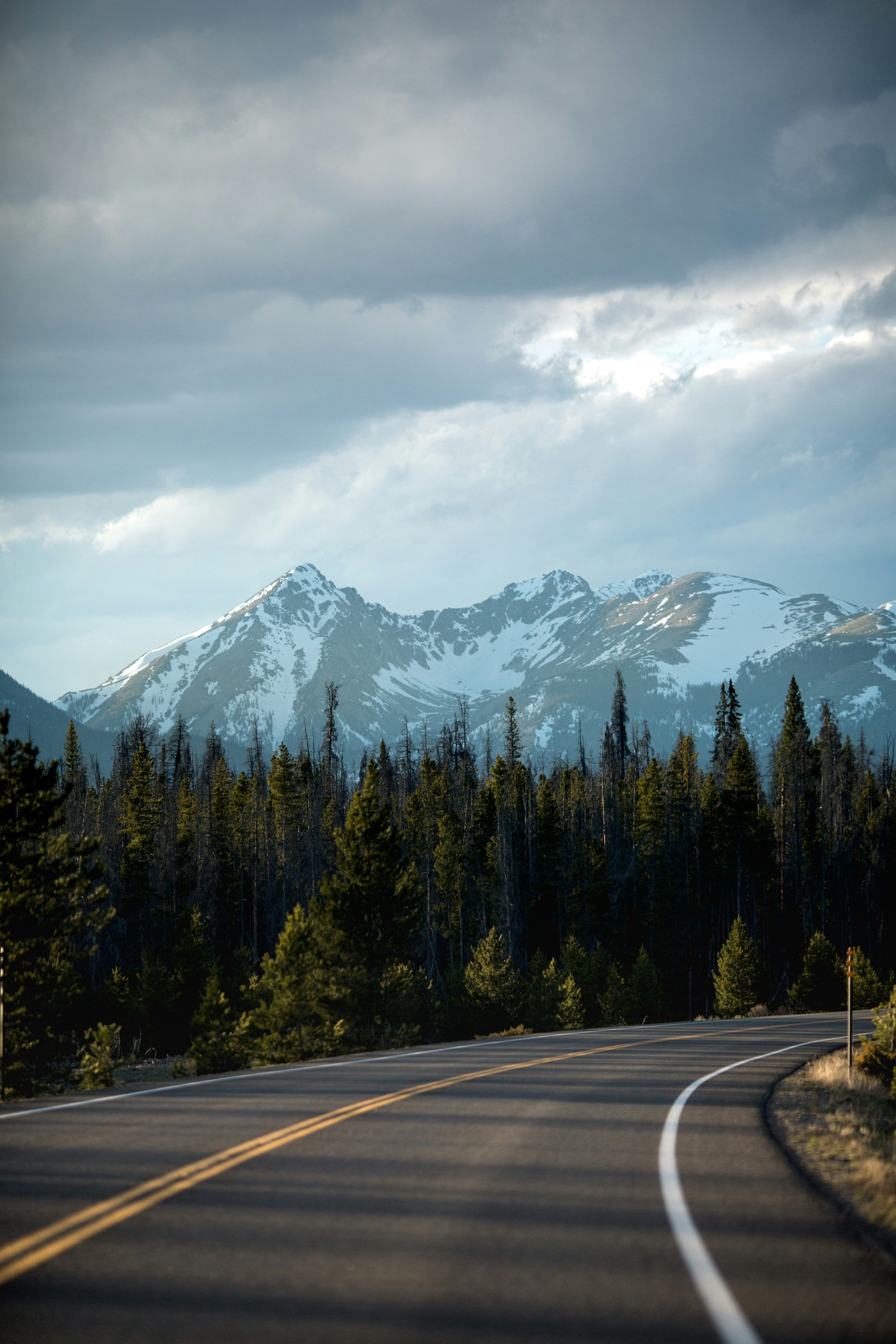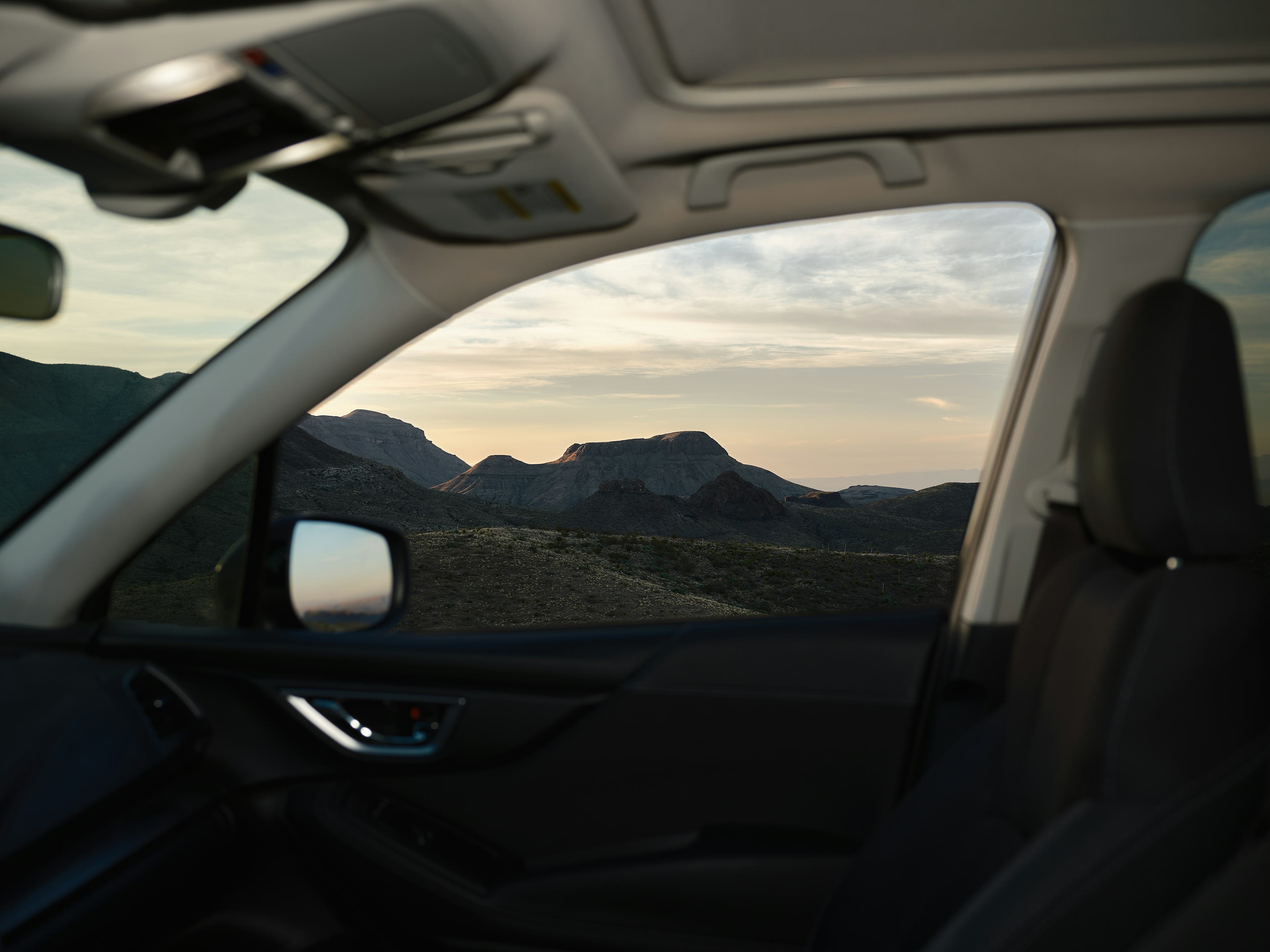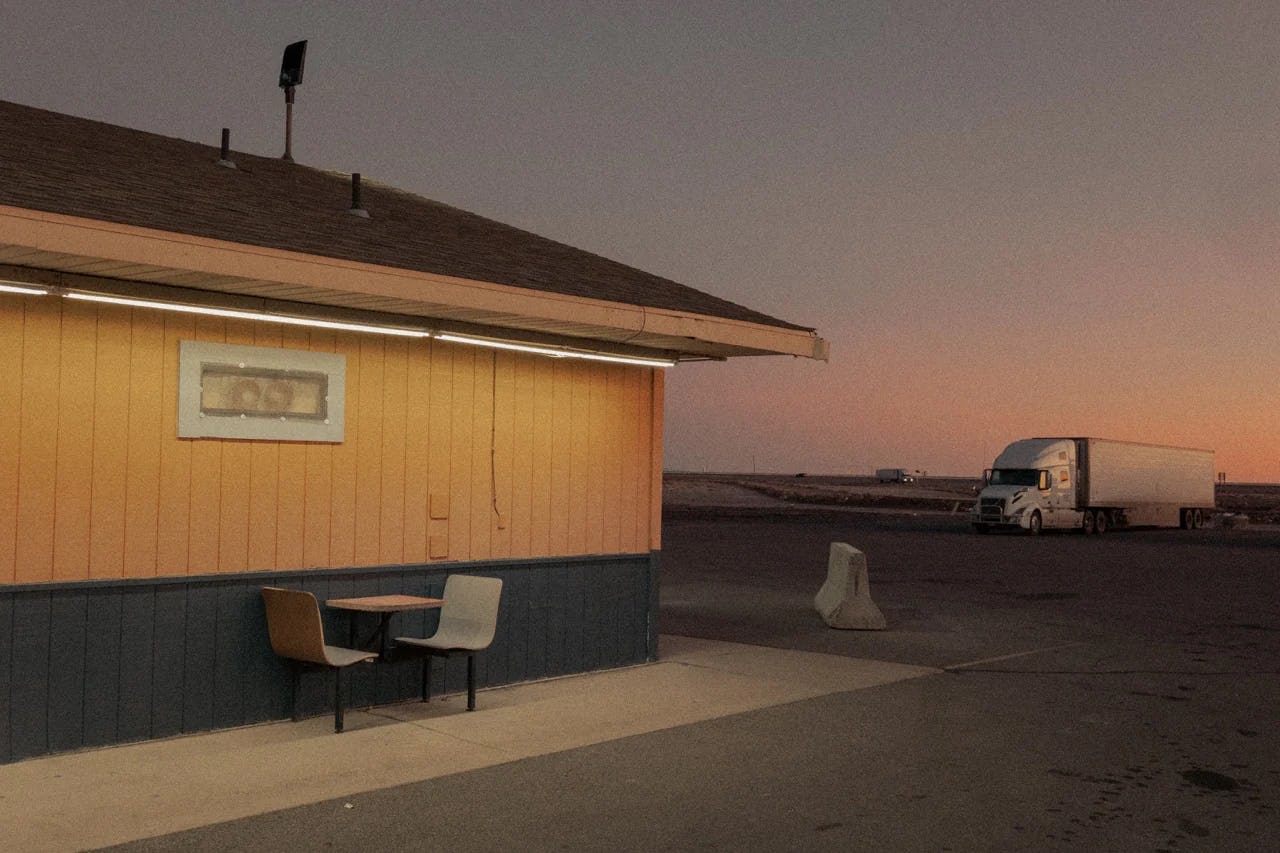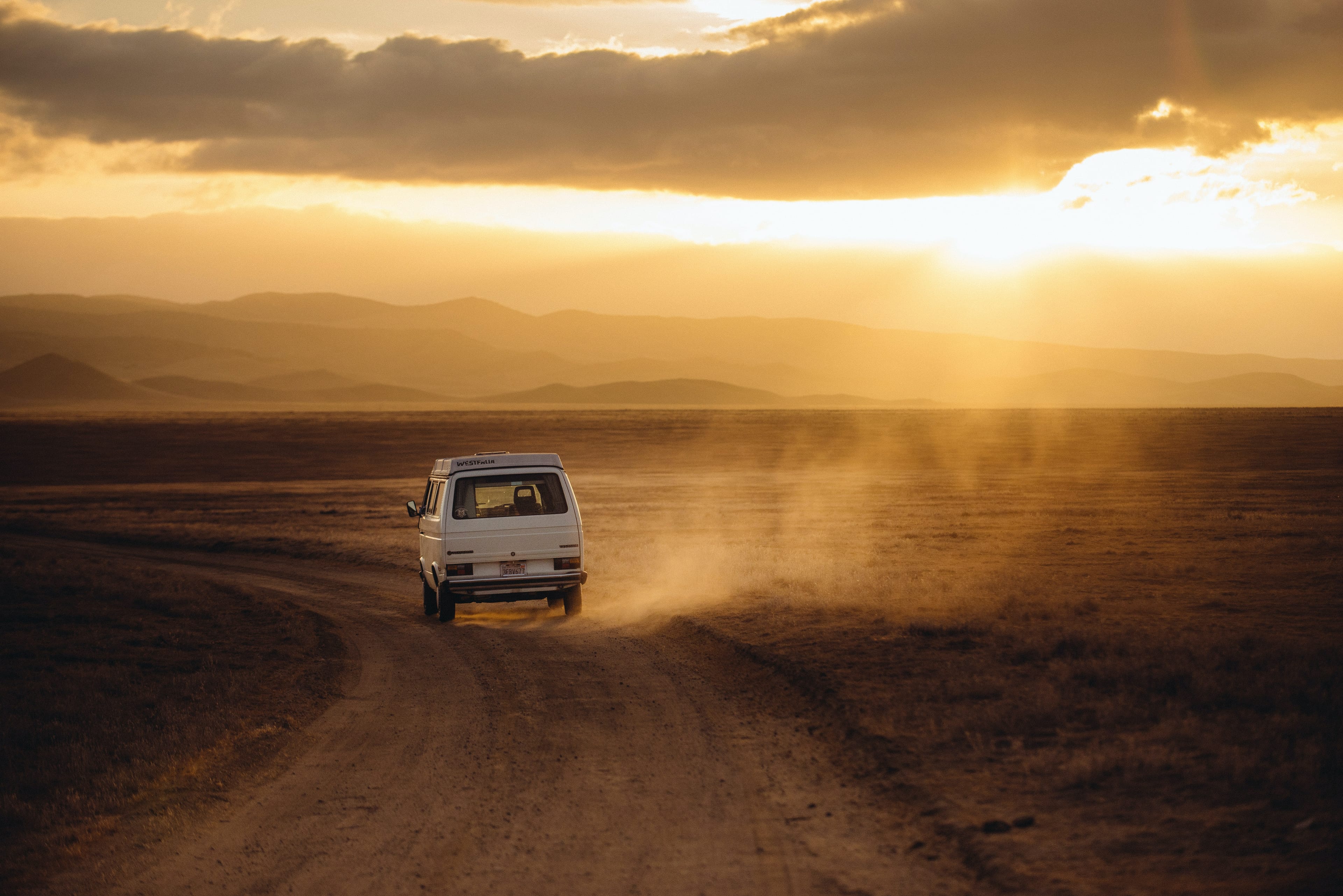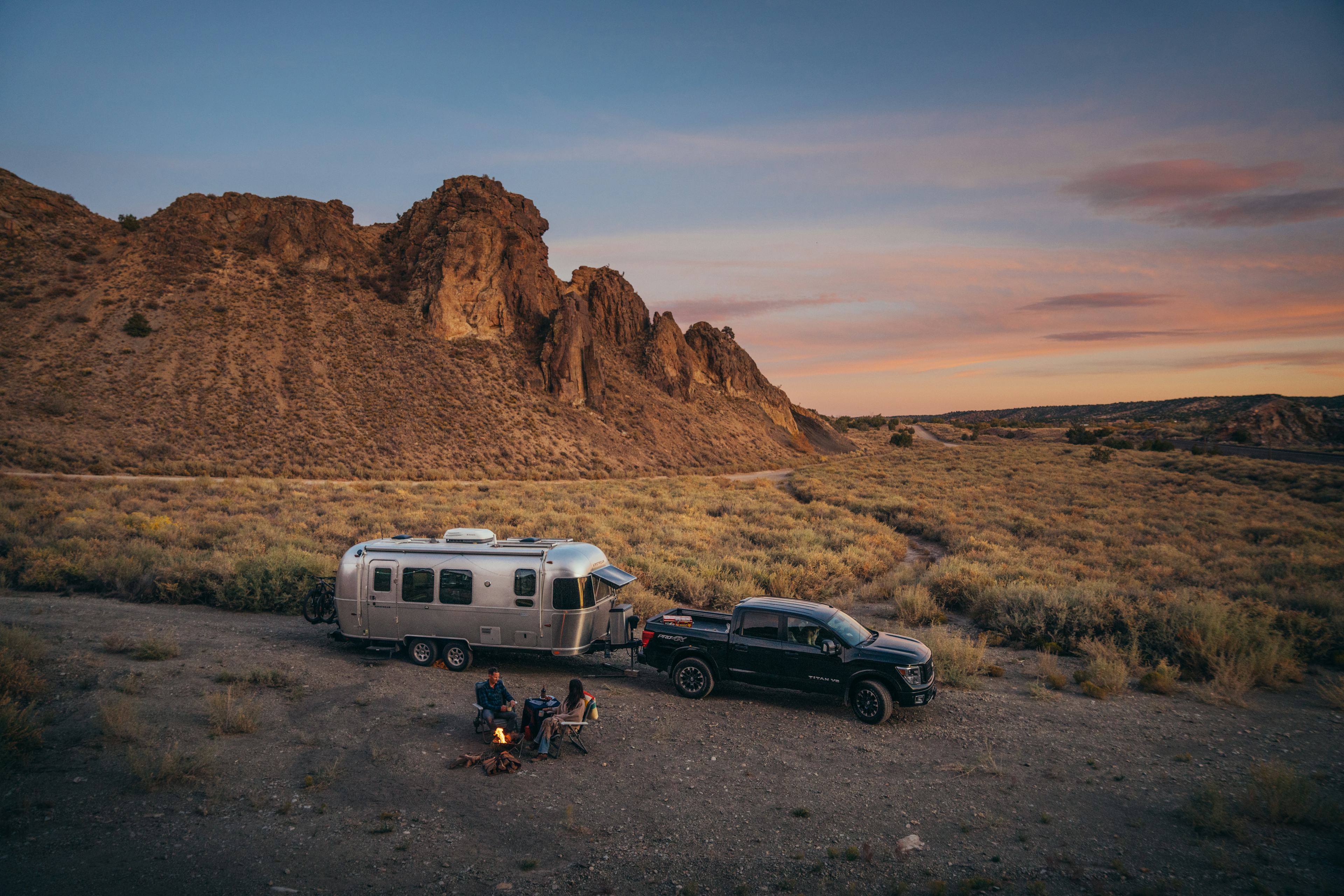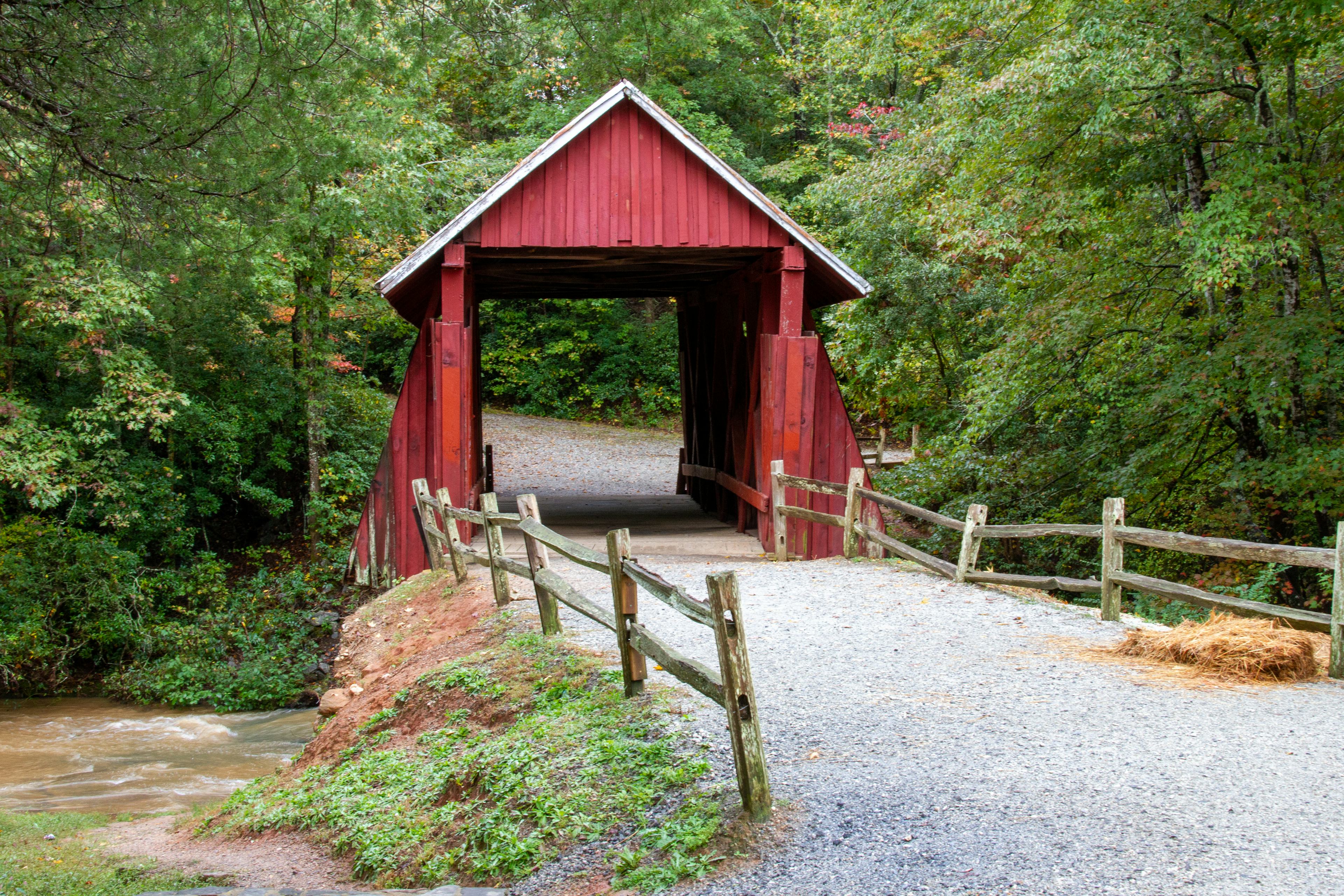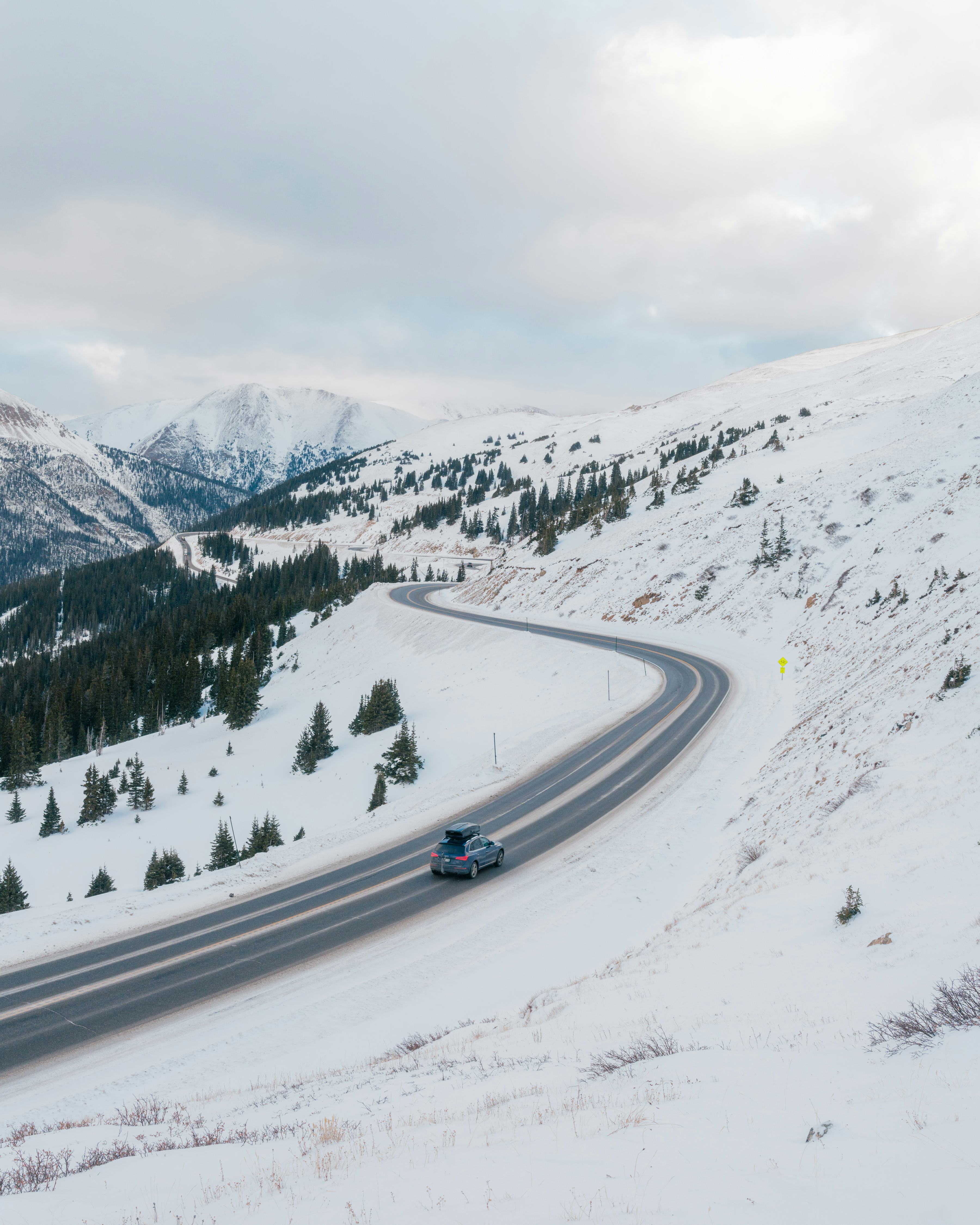THE MOTHER ROAD
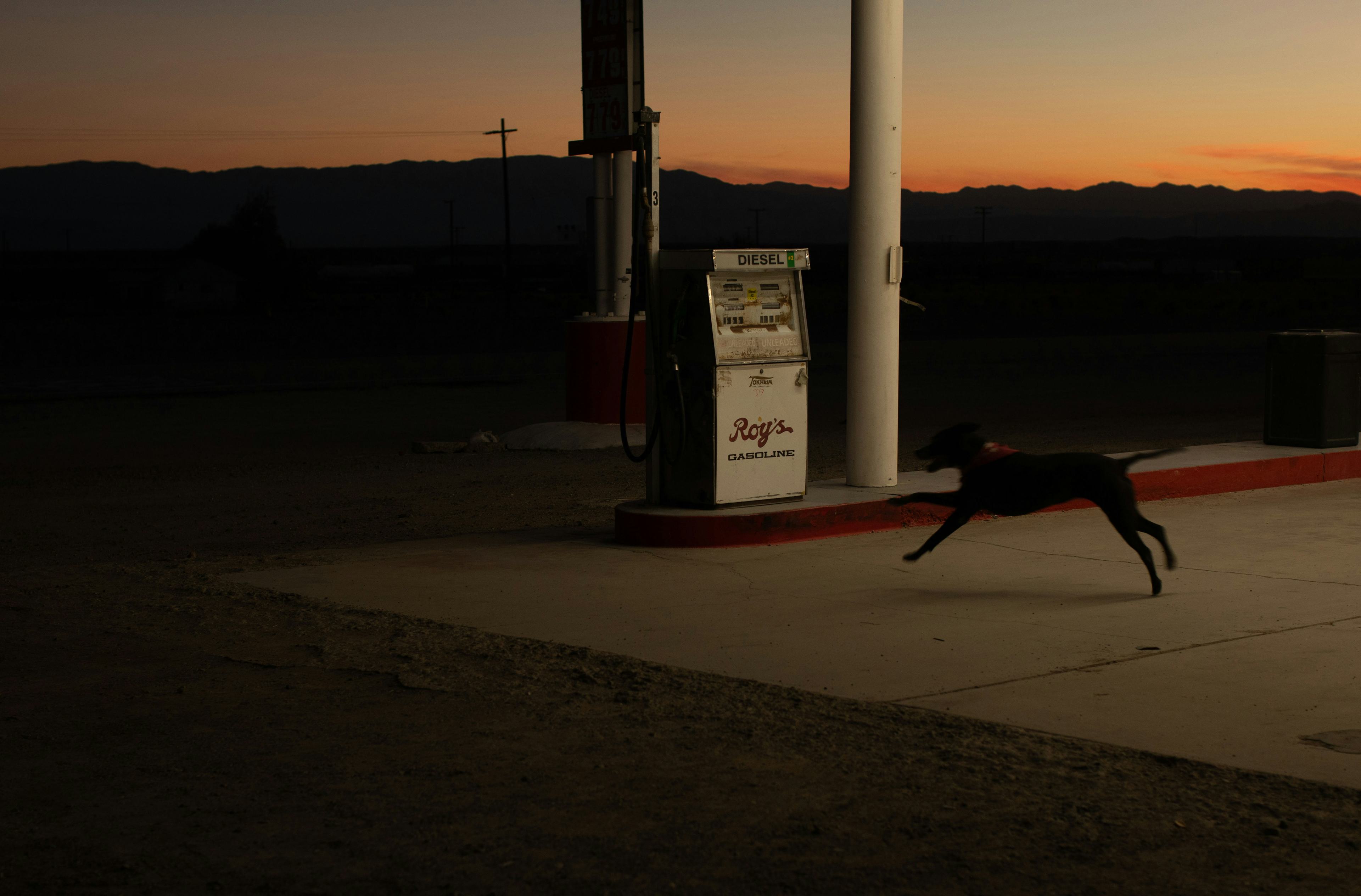
A dog runs outside of Roy’s Gas Station in Amboy, CA.
Route 66. Chicago to Santa Monica. More than 2,400 miles of America that called to Kerouac, Steinbeck, and generations of seekers. Officially, it's off the maps, but the promise of freedom and discovery that made it iconic hasn't faded.
My dad was a short-haul trucker, and his vacation every year was a two-day, no-rest drive from my hometown of Anaheim, California, to his hometown of Jomulquillo, Zacatecas, nearly 1,500 miles away. When I came of age, and vacations became something I could afford, there was really just one trip that called to me: Route 66.
I’m not sure how I first learned about the highway—maybe from reruns of the eponymous ’60s TV show or from Roger Miller’s “King of the Road.” Probably, though, it was from Ms. Sinatra’s English class, during my senior year of high school, when we read both The Grapes of Wrath and On the Road. Each novel’s depiction of Route 66—a trail of dreams, a trail of freedom—spoke to who I wanted to be.
I finally took to what Steinbeck dubbed “the Mother Road” in 2008, traveling with my then girlfriend, now wife. We were on our way to bourbon country in Kentucky, and my yearning for adventures in small towns took a back seat to our search for the Holiday Inn Express nearest to I-40. Route 66 became our flyover country. All I found written about it online were elegies to what it once was—and I don’t live in the past.
As the years went on, though, I got restless often enough to leave the damn interstate and explore. And thank god I did. That’s how I learned that Route 66 shouldn’t be encased in amber as some relic of better times. At its best stops, the route today is a wormhole through which you can glimpse the past while enjoying the present and envisioning the future.
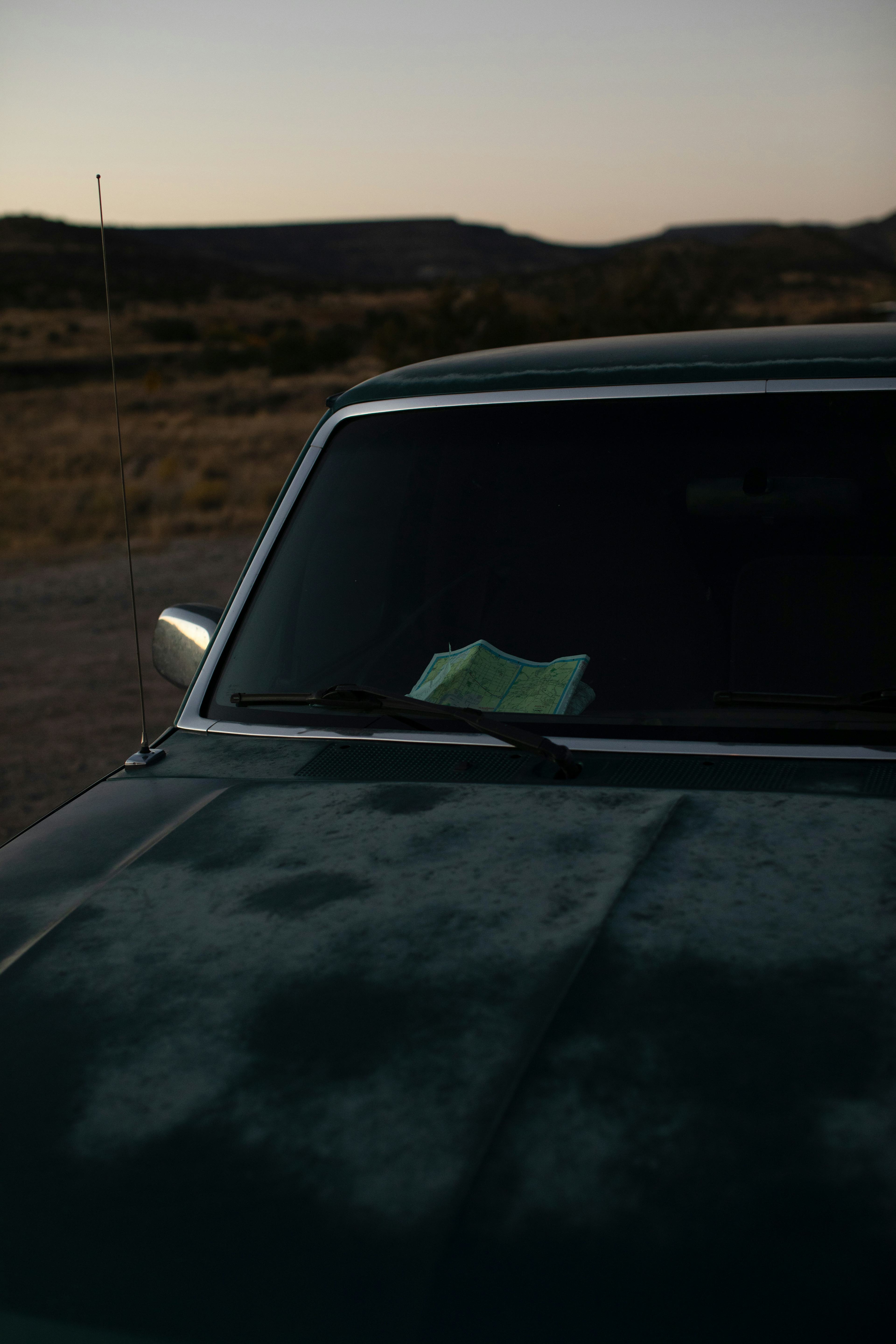
I found this out through Mexican food.
We think of Route 66 as a quintessentially American experience, but people often forget that nearly half of it is on land that was once Mexico. Travelers in its heyday were as likely to fuel up on chile con carne and sopaipillas as on a burger and a slice of pie. And while countless Route 66 mom-and-pops have been replaced by fast-food chains, many of the route’s old Mexican diners aren’t only still open, they’re still delicious.
My first inkling of this came in 2009, at El Rancho Grande, in Tulsa. There, where Route 66 is now 11th Street, diners are beckoned by a gorgeous neon sign of a lasso-tossing charro (a Mexican cowboy). The restaurant’s eponymous combo plate—steaming and spicy, a chicken taco, cheese enchilada and tamale bobbing in chile con carne and chile con queso—was a Tex-Mex relic foreign to my Southern California palate. But a damn good relic.
I’ve since spent time getting to know Albuquerque, where the old Route 66 passes right through downtown. It’s lined with classic New Mexican eateries, but the best is Duran’s Pharmacy. Locals fill their prescriptions, then throw away any cholesterol concerns in favor of Duran’s flour tortillas. Thick, hand rolled, and wheaty, they’re the perfect vehicle for Duran’s red or green chile (or my favorite, a combo of both). Better still, you can get them slathered on top, as a smothered burrito.
But to me, the best manifestation of Route 66’s enduring relevance is at Mitla Cafe, in San Bernardino, California, going strong in its 87th year. It’s in a part of the city that’s seen better days, and on a stretch of former Route 66 recently blocked off for a massive construction project. And yet, come by on a weekend to find the waiting room packed, the crowds gorging in a dining room full of Route 66 memorabilia and photos from Mitla’s storied past. It’s the restaurant that, in 1948, inspired a World War II vet named Glenn Bell to make tacos at his burger stand, just across the street. Some 15 years later, he started Taco Bell, although that chain’s sad, salty tacos can’t compare to Mitla’s: freshly fried shells brimming with ground beef and a blizzard of green cabbage, red tomatoes, and yellow cheese, anointed with one of their strong house salsas.
Mitla’s tacos are a stand-in for a kind of throwback authenticity that even our interstate era can’t stamp out. Order one, two, or five, and enjoy Route 66 in your cocked hand: historical, memorable, alive.
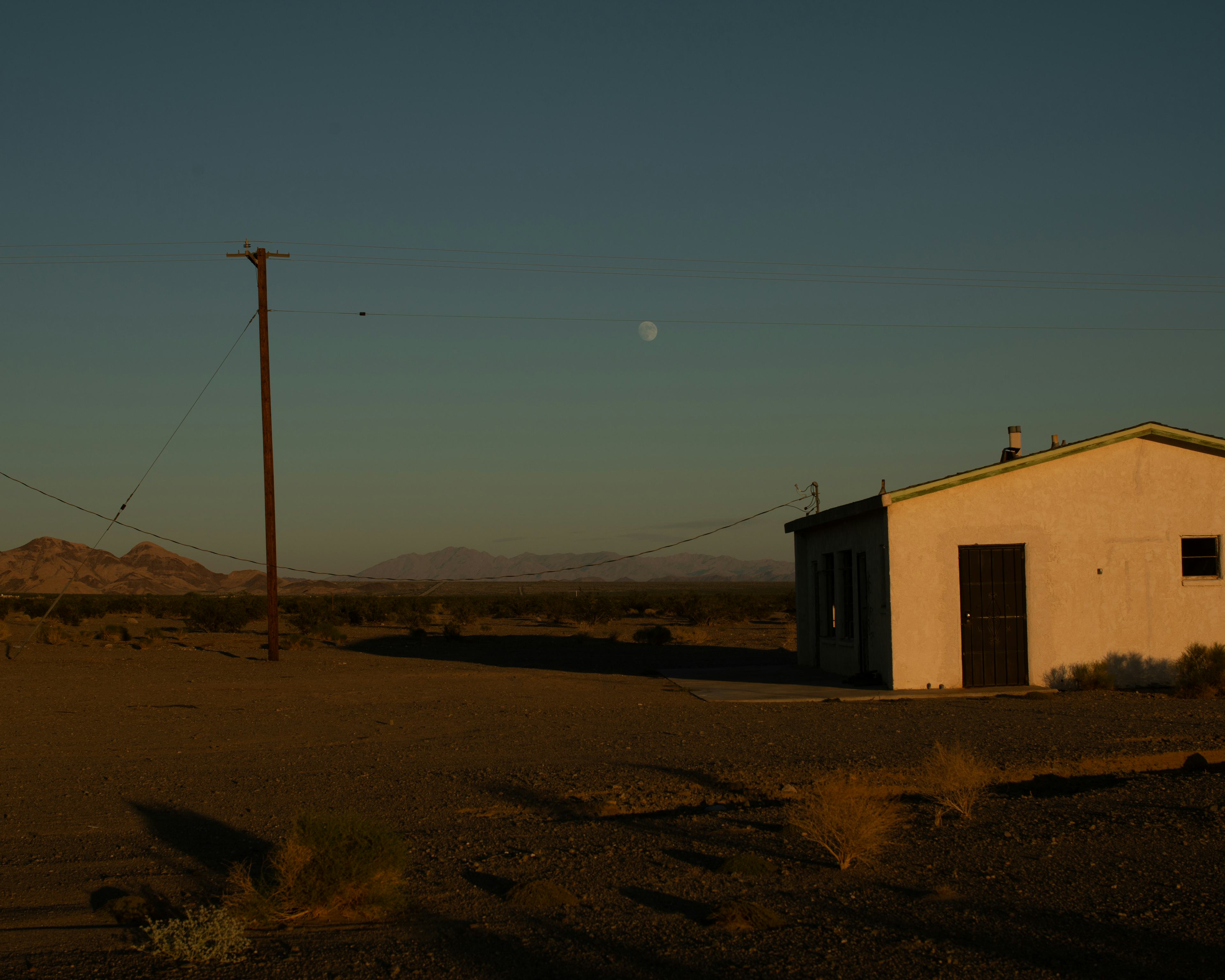
The People of Route 66
INTERVIEWS BY JENNIFER JUSTUS
These interviews have been condensed for length and clarity
JOHN DELGADILLO
Seligman, AZ
Passing through Seligman, in rural western Arizona, you can’t miss Delgadillo’s Snow Cap Drive-In, a cheery vision in neon and nostalgia. John Delgadillo’s father, Juan, built the restaurant in 1953, during the heyday of Route 66, and he knew the colors would get travelers to pause. Seligman suffered when I-40 passed it by in the 1970s, but the Delgadillo family keeps the route’s legacy alive.
My grandpa was here, in Seligman, herding sheep, and he was also a barber. In the 1920s, he opened upa place for haircuts on the old 66. My grandmother was on the way here, from Aguascalientes, Mexico, when my father was born. In the ’50s, they lived on the property where the Snow Cap is now, and my father thought, “Maybe I'll put something there to make money.” He worked for the Santa Fe Railway, and they gave him the lumber he used to build the Snow Cap.
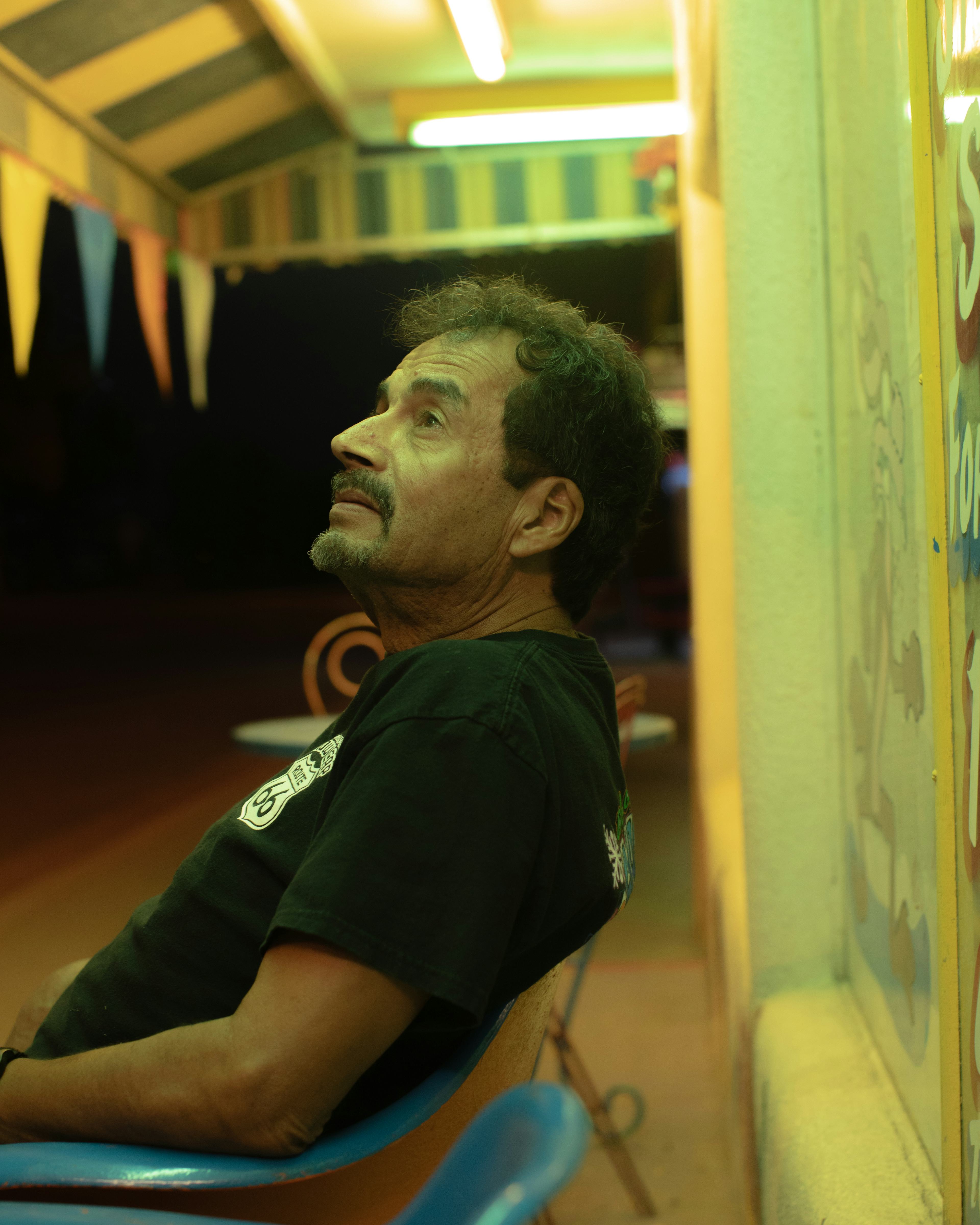
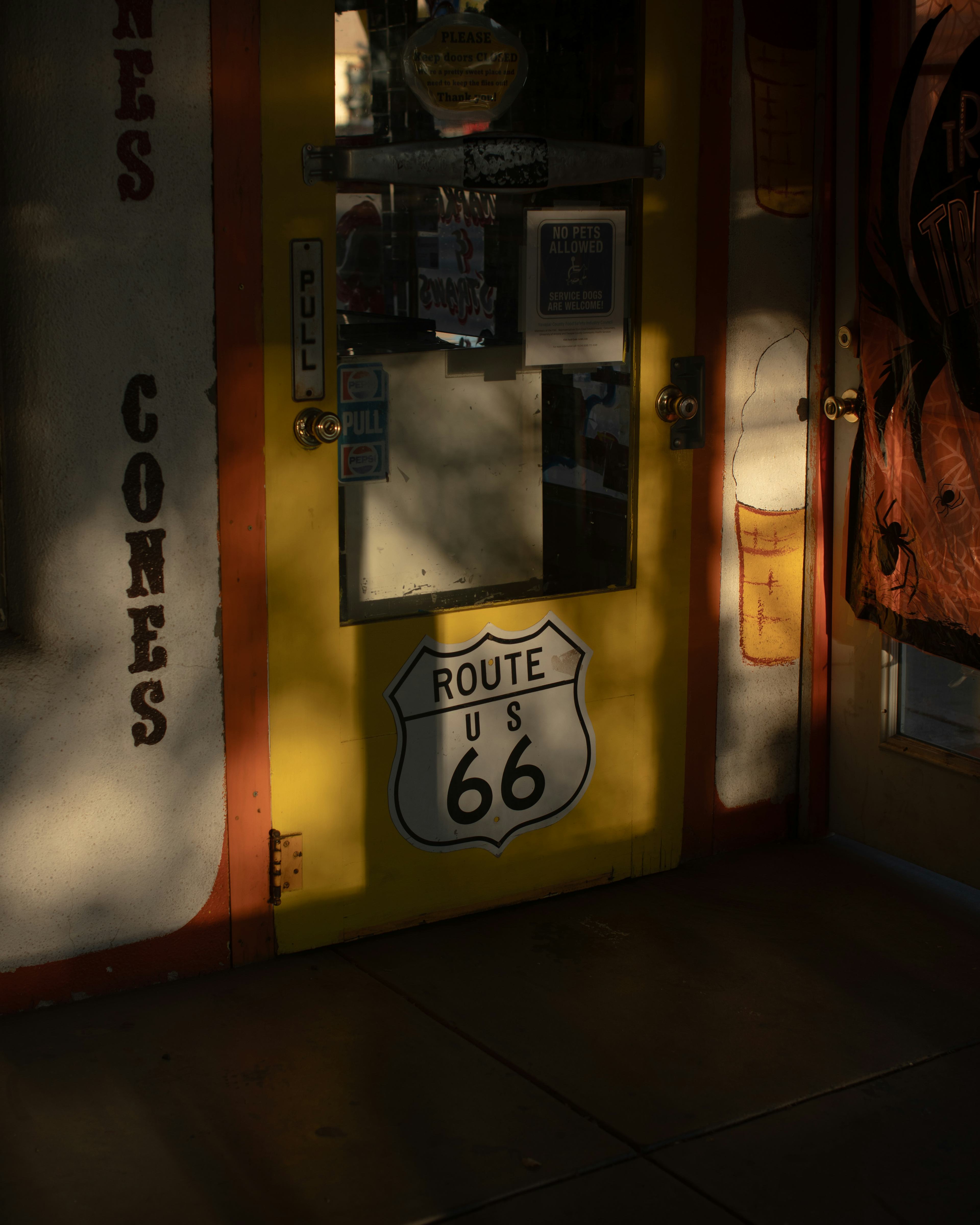
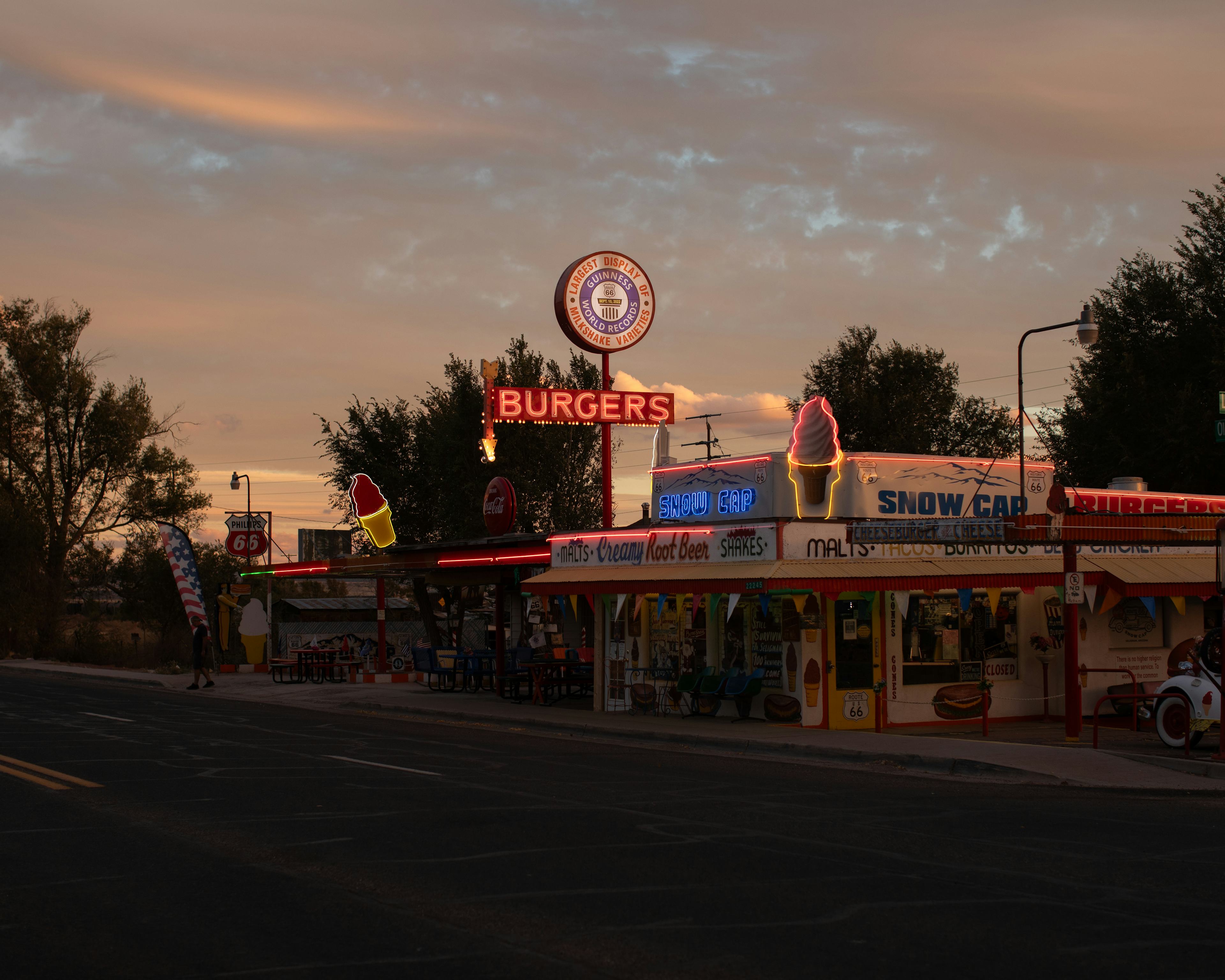
My earliest memories are of helping him out—sweeping, emptying the trash. My Uncle Angel was also a barber and was a big influence on Route 66. When the interstate by-passed us, in 1976, the economy in Seligman went to nothing. Uncle Angel told my dad, “Juan, we need to do something.” They formed a committee, and he started the Historic Route 66 Association of Arizona. It took off like wildfire, this idea of how to bring people back to Seligman, because it was a ghost town. He’s 96 now and retired about three years ago from cutting hair.
Now in Seligman, the businesses are opening up again. And I don't think people are going to stop traveling Route 66. Open roads. Beautiful country. All these little towns on the route have a lot of history, and people want to experience it. I don’t think that’s ever going to change.
Mary Beth Babcock
Tulsa, OK
A 21-foot space cowboy named Buck Atom overlooks a stretch of Route 66 in Tulsa. Mary Beth Babcock, proprietor of Buck Atom’s Cosmic Curios, says Buck once rodeoed along the route before taking flight on an alien spaceship, returning to watch over the mid-century gas station turned art-and-gift boutique she opened in 2018. With its neon sign and guardian “muffler man”—a throwback to fiberglass roadside statues popular in the ’60s—Babcock’s shop bridges past and present.
One day I woke up and asked myself, “What is your purpose in life?” Then this little gas station popped up for sale, and I said, “A souvenir shop in a gas station on Route 66? I couldn’t dream up something more perfect!”
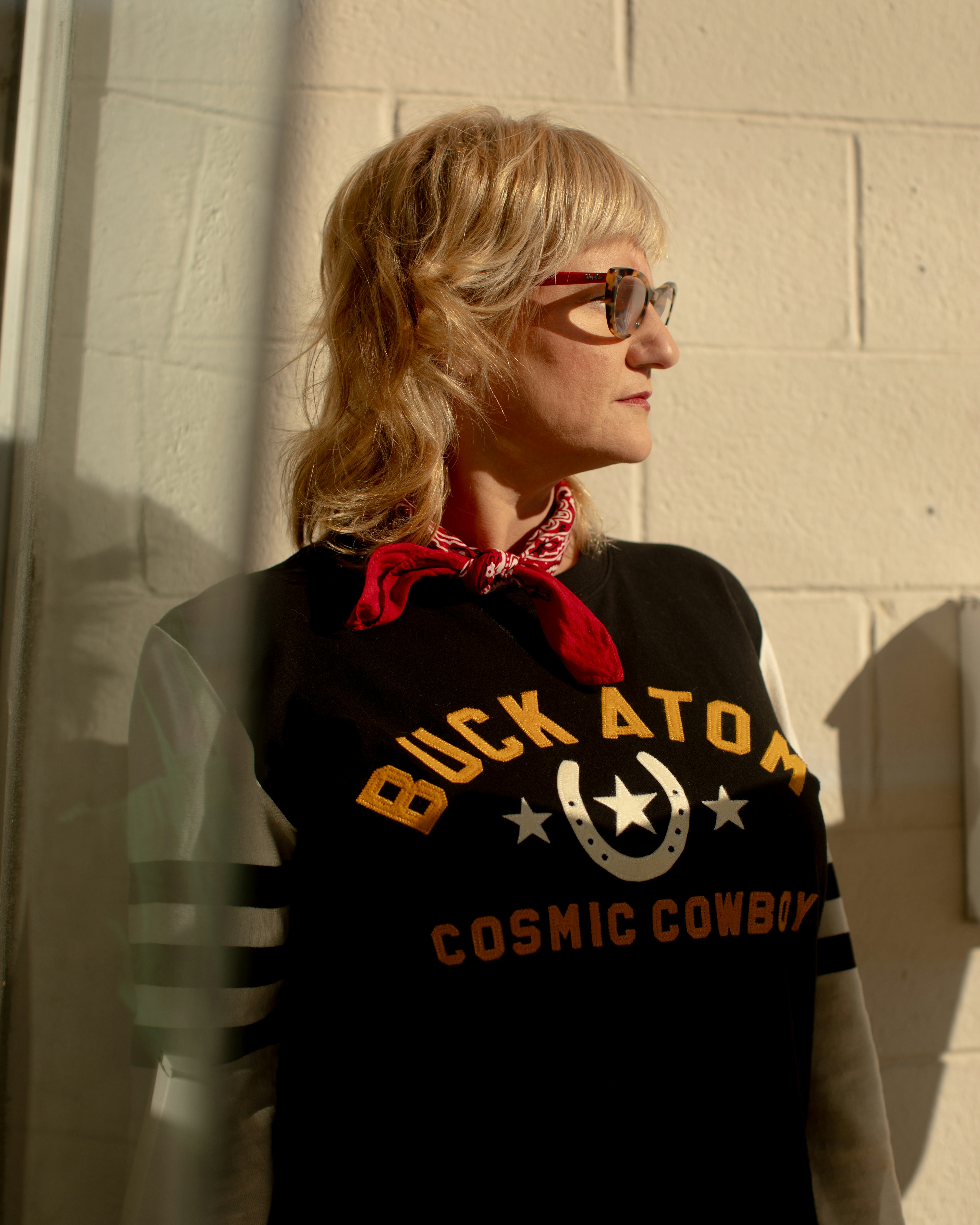
I get a lot of people who come in and say, “This is our dream! We wanted to do this when we retired. We got a trailer!” Yesterday, the coolest ’57 Chevy Bel Air came through, and the lady, she dresses in ’50s outfits along their whole trip. All her outfits were hung in the back seat on a pole—so cute, so cool. The same day, I had people from Ecuador and Brazil. So it’s colorful, all over the board. You can come to Buck’s and feel good, take pictures with these fun things. I’m here to help people smile.
There are so many different elements that make Route 66 magical to me. The food, the way you meet new friends along the route, all the roadside attractions. And the neon! The way it glows at night, that beautiful sound of it clicking and buzzing. It just puts you right back in the day.
JANICE QUIROZ
Laguna Pueblo, NM
Historic Route 66 crossed the lands of more than 25 tribal nations, including the Laguna Pueblo, in northwest New Mexico. There, on a stretch of the old route, within sight of the interstate, Janice Quiroz runs the Indian Arts Center, selling Native-made pottery, silverwork, and beadwork, along with her much-loved fry bread. The dish has origins in the Long Walk, when Diné (Navajo) people were forcibly relocated to New Mexico, subsisting on government rations like flour and lard. Today some view fry bread as a symbol of colonialism; others see an emblem of Indigenous ingenuity and resilience.
I’m from the Laguna tribe, but I was born and raised in Arizona. Just about all of my siblings have moved back here, to the reservation. An uncle gave me the land the shop is on, and we built our building from the ground up.
When people ask, “Where’s the old 66?” I say, it’s running right in front of my building! People come across the country still wanting to drive the whole old route, but in a lot of places, it’s more or less disappeared. Here, it’s a state highway now. Tourists used to come and take the old 66 highway signs, and I think the state got tired of replacing them, but it’s still the original 66.
The fry bread is a little draw to get people off the interstate. Most of the different tribes in the area make a fry bread. Some make it almost the size of a biscuit, but ours is like a 7-inch plate. Some used to use wheat flour, but we use the Blue Bird Flour they have in this area. When my grandmother made it, we’d only have it for special occasions, because it’s fried—back then, in lard, now we use canola oil.
My mother gave the recipe to me, and I actually feel privileged to say, hey, this has been in our family for generations. And it makes me feel proud that people keep coming back for it.
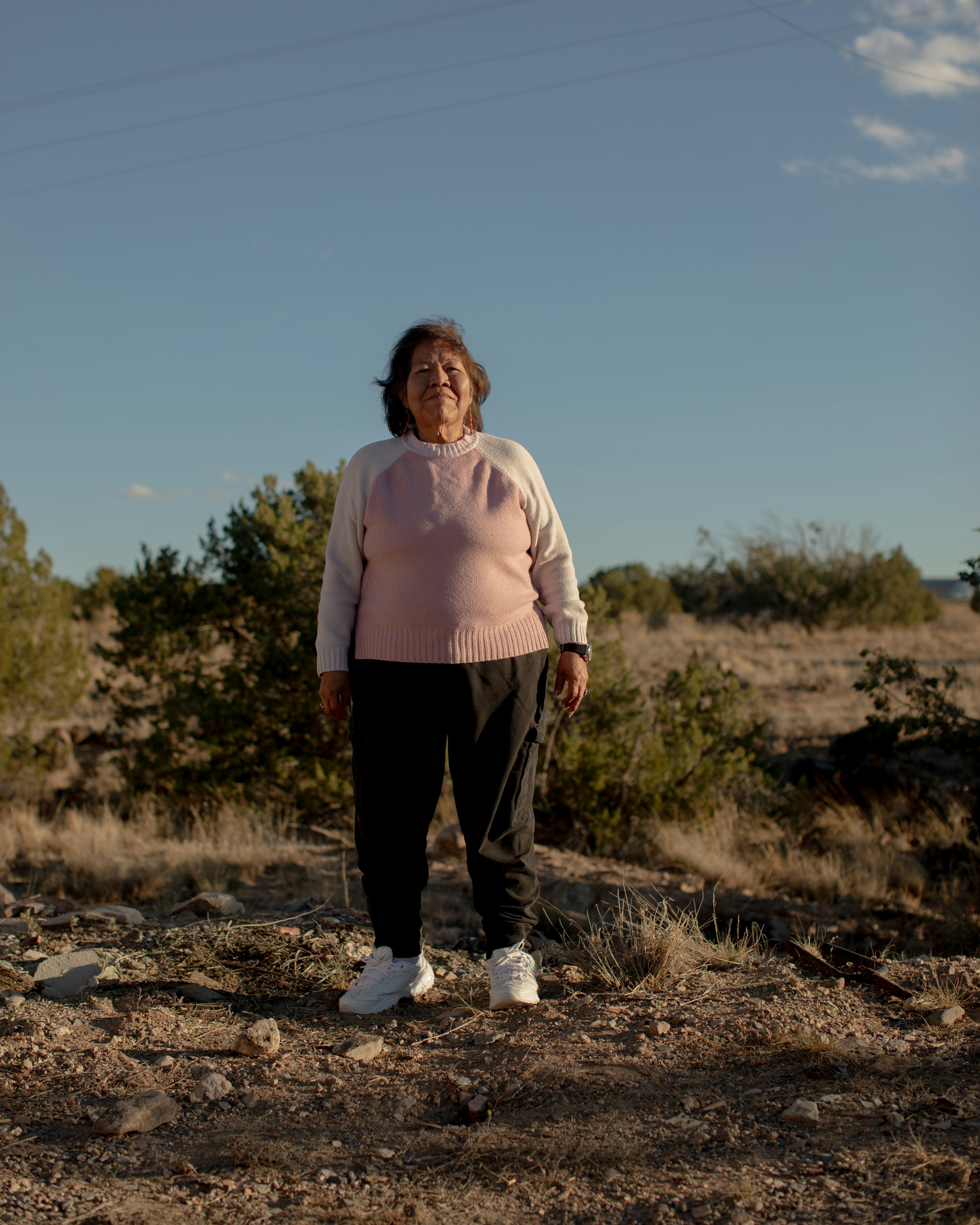
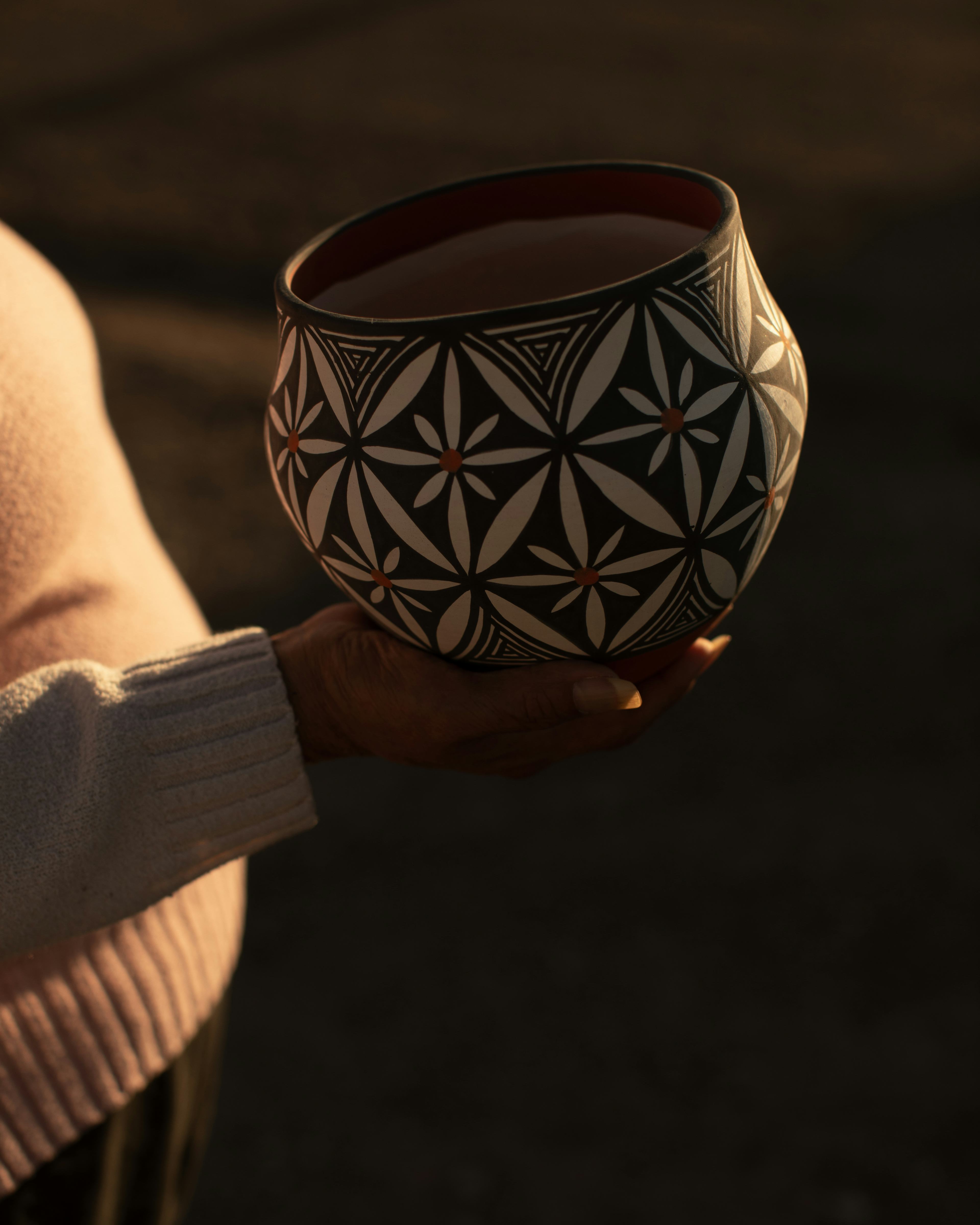
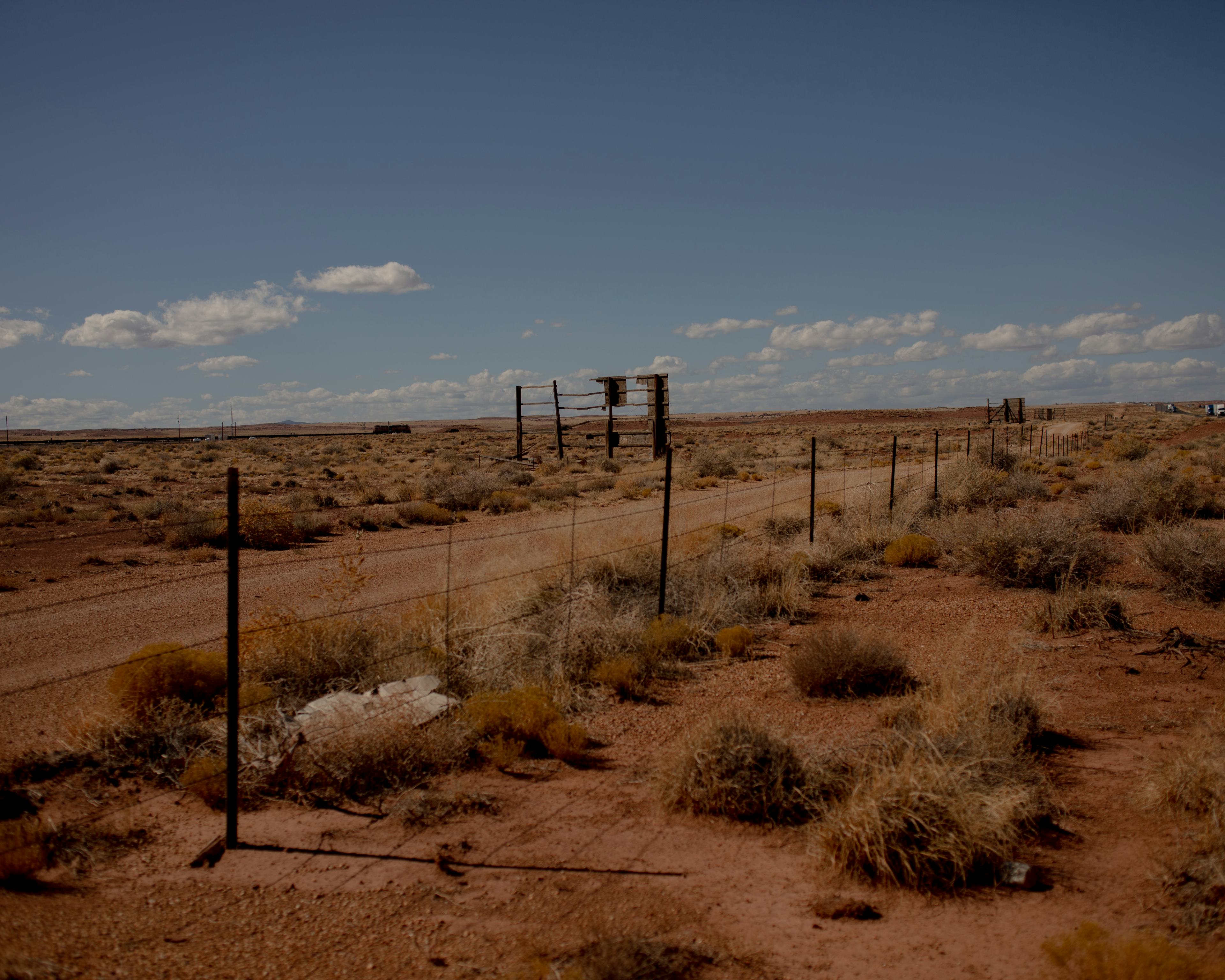
BRENDA HAMMIT
Adrian, TX
Brenda Hammit started as a line cook at the Midpoint Cafe, in the tumbleweed town of Adrian, more than a decade ago. The restaurant, which opened in 1928, sits at Mile 1,139—roughly the halfway point between Chicago and Santa Monica. When Hammit took over in 2018, she knew it meant carrying on the tradition of baking the cafe’s famed “ugly pies.”
I'm up until 3 o’clock in the morning making pies. Chocolate cream, chocolate and peanut butter, our Elvis pie, which is chocolate, peanut butter and banana. I have a blueberry banana, strawberry banana, coconut. Tennessee-whiskey chocolate pecan, regular pecan. Apple, green-chili apple. I think my burgers are good too, but yeah, pie is what we’re known for.
In 2019, before we shut down for COVID, we sold over 1,500, piece by piece, in six-and-a-half months. That’s about 20 pies a night. Haven’t done quite that since, and I’m beginning to wonder if I’ve been slacking or if people are just on a diet.
My mom was the piemaker here before me, and she’s got one I haven’t ventured into yet: lemon meringue on graham-cracker crust. My grandmother’s recipe. People come from all over to eat it. They’re like, “You don’t have that lemon?” I’m not as good as my mom, so I haven’t got there yet. But I’m going to try this year.
I love just visiting with people, man—that’s what it’s all about for me. I haven’t went through the book these last couple of years, but in 2019, we had 84 countries come through. I can’t travel overseas—I’ve got cattle and horses and stuff—but if I can’t do that, then they come to me, see? Works out perfect. People are just awesome. I love everybody.
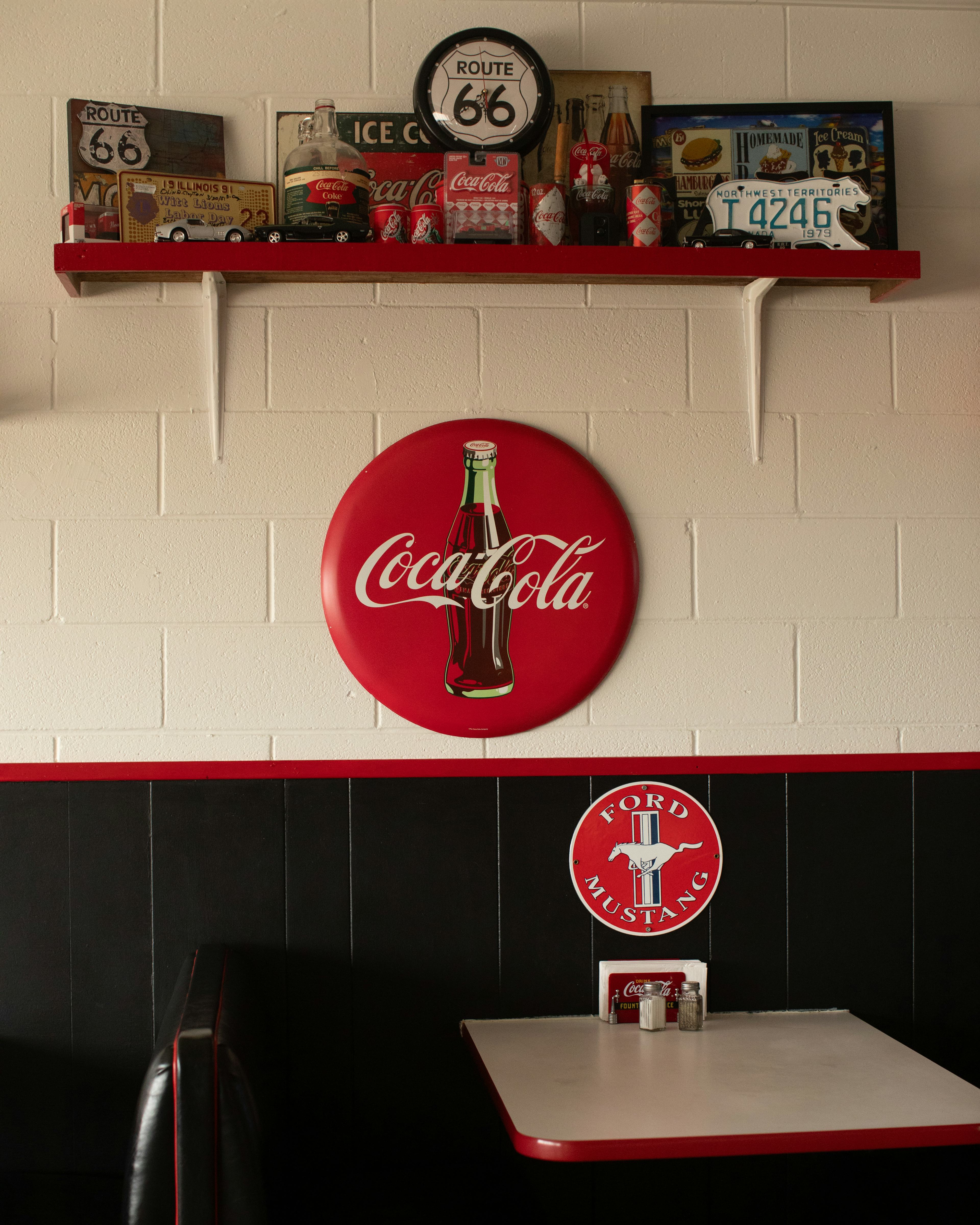
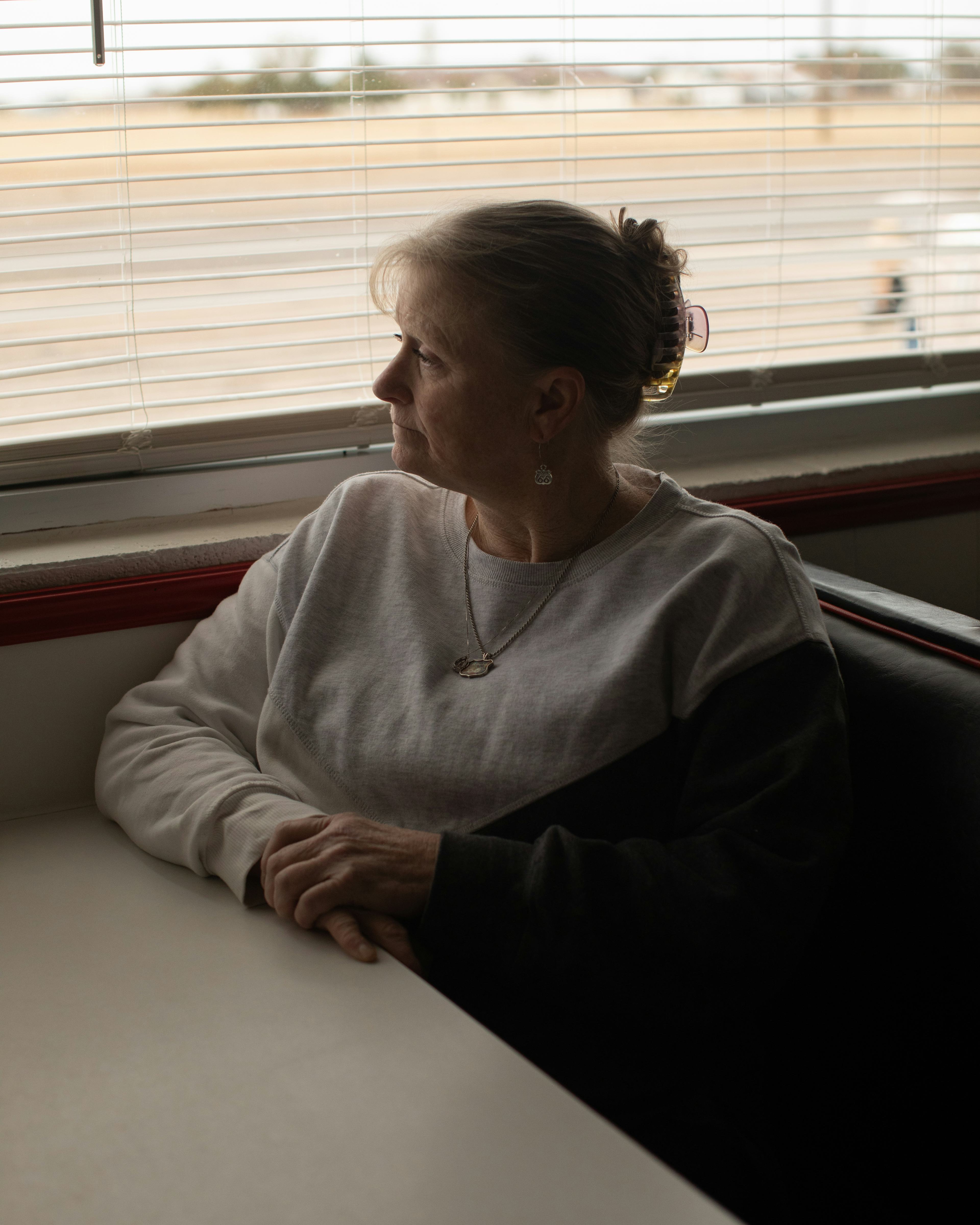
REVERAND ALLEN THREATT III
Luther, OK
In the 1950s, Allen Threatt III pumped gas at his family’s Threatt Filling Station in Luther, thought to have been the only Black-owned service station on Route 66 during Jim Crow. When Allen Threatt Sr. opened it in 1915, it was a haven between “sundown towns”—where Black travelers weren’t safe after dark—a place to gas up, eat, and pull around back to sleep. Today the Threatt family is reviving the station, which closed in ’74, as an interpretive center and RV park.
My grandfather was a businessman, and he picked that spot to be a refuge for people. God himself put on his heart the right location and time to build. We had all the needs to satisfy people from miles and miles away. By word of mouth, people would travel down 66 and relay to relatives, “Make sure you can stop by Threatt Service Station, because you can be well taken care of.”
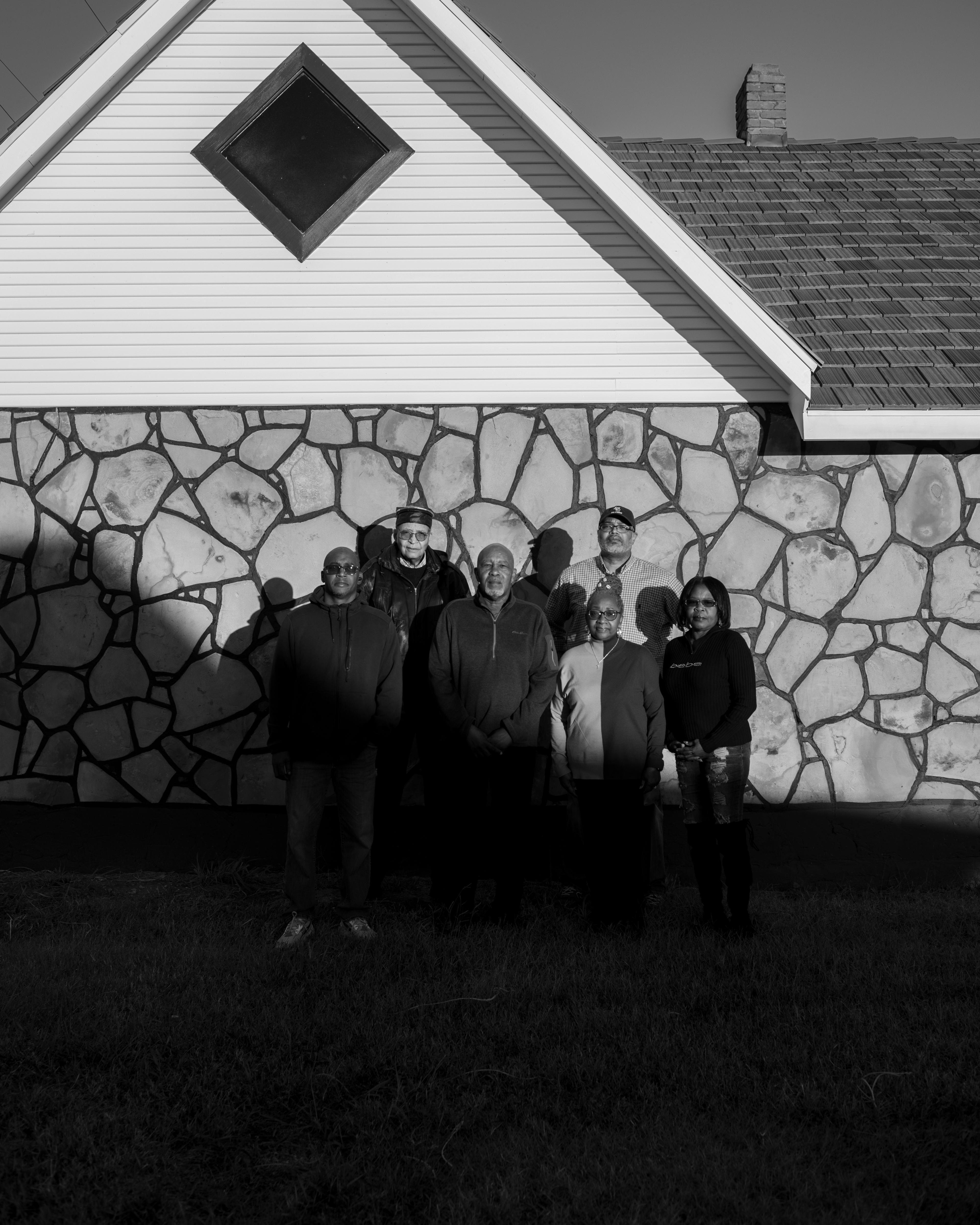
The ’40s, ’50s and ’60s was prime time. On the weekends, that’s when the fun happened. They had what you call a picnic ground, with tables and light poles running tree to tree. Sometimes the Negro Baseball League would come into town to play. If people didn’t bring food to the picnic ground, my uncle sold barbecue next door at the Brown Bomber. They had a dance platform and a jukebox. People would play music with quarters and eat. They’d be out there jitterbugging. As kids, we’d get there early in the morning and pick up quarters, nickels and dimes.
We believe our grandfather, uncles and aunts are looking down, smiling on us. We are being energized and motivated by our deceased to get the Threatt Service Station back well known.
